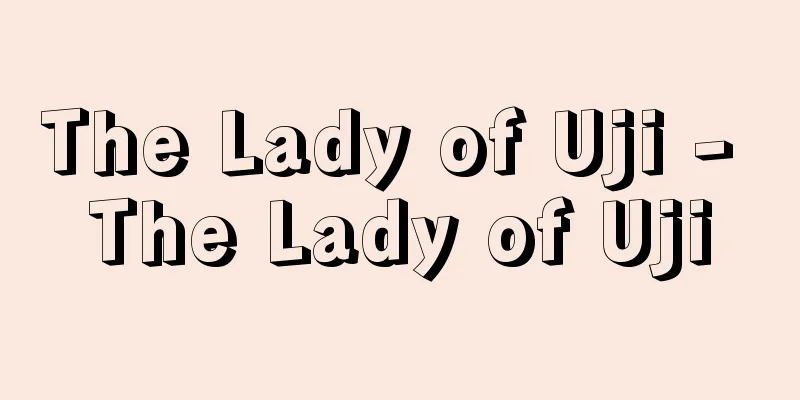Sect Shinto - Kyoha Shinto

|
A general term for the Shinto religious groups that were officially recognized during the Meiji period after splitting off from the government agencies Daikyoin and Shinto Secretariat. The thirteen groups were: Shinto Daikyo (Shinto, Shinto Headquarters), Shinto Shusei-ha, Kurozumikyo (Shinto Kurozumi-ha), Izumo-Oyashirokyo (Shinto Taisha-ha), Fusokyo (Shinto Fuso-ha), Jikkokyo (Shinto Jikko-ha), Shinto Taiseikyo (Shinto Taisei-ha), Misogikyo (Shinto Misogi-ha), Shinshukyo (Shinto Shinshu-ha), Ontakekyo (Shinto Ontake-ha), Shinrikyo, Konkokyo, and Tenrikyo. They were also called the Thirteen Shinto Schools or Sects of Shinto (former names are in parentheses). The new Meiji government aimed to establish a political system where religion and politics were one, and in September 1869 (Meiji 2), it established the system of missionaries to proclaim Daikyo (Shinto was called Daikyo or Honkyo at the time), and in the following year, the Imperial Rescript on Proclamation of Daikyo was issued along with the Imperial Rescript on the Suppression of the Deities (Mikotonori), and the missionaries began their activities. However, the missionaries were mostly Shinto priests and scholars of Japanese classics, and they often attacked Buddhism in their sermons, which caused problems, so in 1872, the system of missionaries was revised and a teaching post was established to teach the spirit of Daikyo through the unification of Shinto and Buddhist sects. The following year, Daikyoin was established, and during this time people from various religious sects that had emerged during the Edo period were appointed to teaching posts, but because unification was difficult, in 1875, it was decided to separate Shinto and Buddhism, and the Shinto sect established the Shinto Bureau. However, there was still no unity, and some people split off and formed independent sects.Furthermore, in January 1882, the positions of instructor and assistant priests were abolished, and many people left the government and formed independent sects, which became sects of Shinto. [Junichi Kamata] [References] | | | | | | | | | | | | | |Source: Shogakukan Encyclopedia Nipponica About Encyclopedia Nipponica Information | Legend |
|
明治時代、政府機関としての大教院、神道事務局より分派独立し、公認された神道系宗教団体の総称。神道大教(神道、神道本局)、神道修成(しゅうせい)派、黒住(くろずみ)教(神道黒住派)、出雲大社(いずもおおやしろ)教(神道大社(たいしゃ)派)、扶桑(ふそう)教(神道扶桑派)、実行(じっこう)教(神道実行派)、神道大成(たいせい)教(神道大成派)、禊(みそぎ)教(神道禊派)、神習(しんしゅう)教(神道神習派)、御嶽(おんたけ)教(神道御嶽派)、神理(しんり)教、金光(こんこう)教、天理教の13団体で、神道十三派また宗派神道とも称した(括弧(かっこ)内は旧称)。 明治新政府は祭政一致の政治体制確立を目ざし、1869年(明治2)9月、大教(当時、神道のことを大教また本教とよんだ)宣布のため宣教使の職制を定め、翌年正月には神祇(じんぎ)鎮祭の詔(みことのり)とともに、大教宣布の詔が発布され、宣教使が活動を始めた。しかし、その宣教使は神職と国学者が主で、説教のなかで仏教攻撃をすることが多く、弊害が生じたので、1872年宣教使の制を改め、教導職を置き、神道仏教各派合同して治教の精神を教導することとした。翌年大教院を設け、この間に江戸時代に発した宗教諸派からも教導職に任命される者を出していたが、統一に無理があったため1875年神仏分離してあたることとし、神道系は神道事務局を設けた。しかし、なお一致せず、分派独立する者が出、さらに1882年1月、神官の教導職兼補が廃止されるとともに、政府の手を離れ別派独立する者が続出し、それらが教派神道となった。 [鎌田純一] [参照項目] | | | | | | | | | | | | | |出典 小学館 日本大百科全書(ニッポニカ)日本大百科全書(ニッポニカ)について 情報 | 凡例 |
Recommend
Thermae
… Baths became commonplace and gained importance ...
Okudaira Kyubey - Okudaira Kyubey
...There are no noteworthy industries, but citrus...
Mongolian - Mongorugo
It is also called Mongolian. In the narrow sense,...
Calpurnius
...Other prose writers include Petronius, author ...
Ahhi - Ahhi
…After the Battle of Malazguird (1071), it came u...
"The Theory of the Cause and Right Principle"
...His Chinese name was Chin-na. In his two major...
Guaiacum; Lignum vitae
This is the name given to the wood of Guaiacum off...
Kose Yuji - Kose no Oji
Year of death: Jinki 1.6.6 (724.6.30) Year of birt...
Castration anxiety
...A psychological reaction to parents' intim...
Checkland, PB (English spelling) ChecklandPB
...SSA was born out of the reflections that were ...
Kambara - Kambara
...Maekakeyama (2,521m), which currently constitu...
Akiyasu Kitabatake
?-? A military commander from the Nanboku-cho to ...
lenticular screen
...A print that gives a three-dimensional appeara...
Liquid metal
...Many organic liquids are also molecular liquid...
Conditional rights - conditional rights
When a condition is attached to a legal act, the e...









